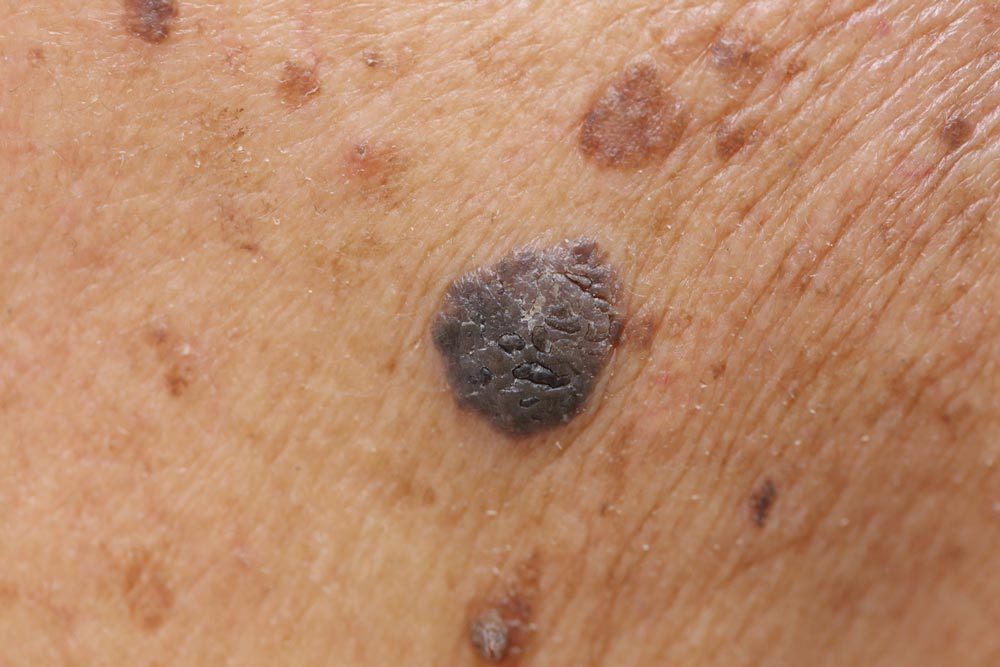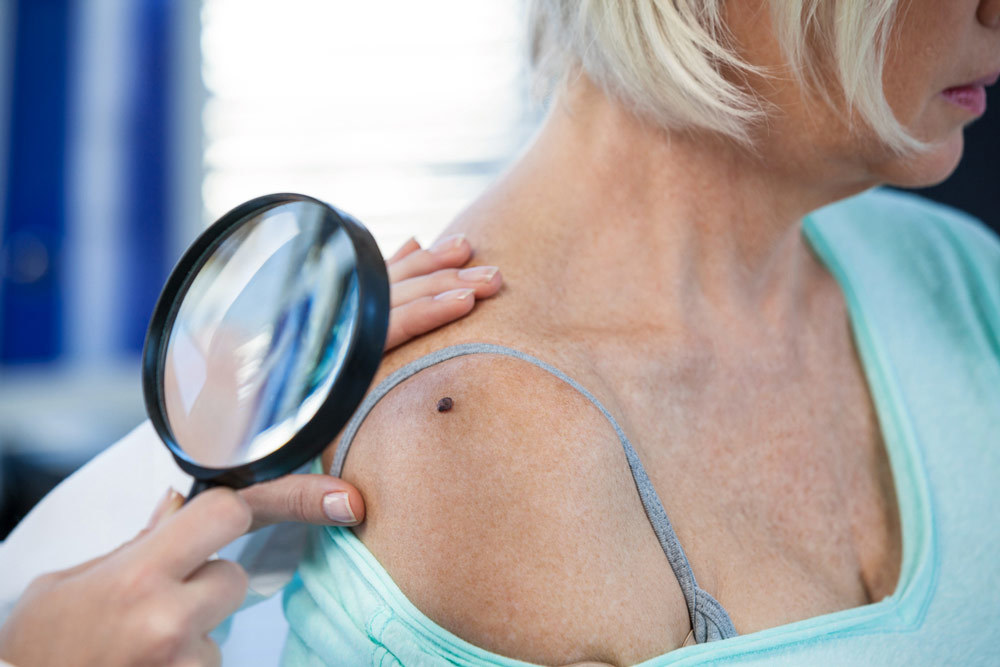 First of all, a skin tag cannot be cancerous by definition. A skin tag is nothing more than a flap of skin that protrudes from the body and is connected by a small amount of tissue.
First of all, a skin tag cannot be cancerous by definition. A skin tag is nothing more than a flap of skin that protrudes from the body and is connected by a small amount of tissue.
However, many people mistakenly think that a skin tag is cancerous. The inverse also applies, many people believe that a cancerous lump on their skin is nothing more than a skin tag.
This article will focus on cancerous lumps on the skin that many people mistake for skin tags.
Skin Tumors
Do you have a lump under your skin?You might have a skin tumor or a skin cyst.
Unfortunately, most people cannot differentiate between a skin cyst and a skin tumor. However, some signs do exist that will allow you to see the difference.
The first indicator, a skin tumor will normally grow quickly. They can also grow quite large. So large, in fact, that they may actually cause some discomfort.
The other telltale sign of a skin tumor is firmness. Skin cysts are not nearly as firm as a tumor.If you can move the lump around, then it is most likely a cyst. Also, if a blackhead appears in the middle of the lump or the lump has discharge, then you most likely have a cyst.
Now, just because you have a skin tumor does not mean it is cancerous. Some, not all, skin tumors are simply benign tumors. Many skin tumors are cancerous though. Only a dermatologist can tell you if a skin tumor is cancerous or benign. This process normally involves the dermatologist feeling the tumor and observing the size. Your dermatologist will probably perform a biopsy as well.
Skin Cysts
Skin cysts also appear as lumps under the skin. Fortunately, skin cysts are usually benign and not cancerous. On rare occasions they can be cancerous cells, so make sure to see a doctor or dermatologist when you suspect you have a skin cyst or other form of skin lesions.
Identifying skin cysts is a little easier than identifying a skin tumor because cysts have much more identifying characteristics.First, a skin cyst will typically have a blackhead in the center of the lump. Second, they will often have a red color and a swollen appearance. Other signs include the ability to move the cyst around underneath the skin by pushing it.
Finally, a skin cyst should be soft and not grow (or grow slowly).
Skin cysts should not cause too much concern since they are usually benign. However, on occasion, they may be cancerous. For this reason, you should always consult a dermatologist when you find a lump under your skin.
Moles
Moles are similar to skin tags,and some moles actually resemble a skin tag; this is because moles are nothing more than a group of skin cells that grow together. These skin cells then turn dark when exposed to the sun. Sometimes they can become cancerous if the cells continue to grow.
The most well-known and lethal form of cancer from moles is melanoma; however, melanoma is not the only type of skin cancer you can get from moles though, but malignant melanoma is the most aggressive and also considered the most life-threatening form of skin cancer you can get. It has been known to spread to other parts of the body. The cure rate for malignant melanoma depends on the stage of the melanoma when it is detected.
Fortunately, most moles are not cancerous, and you do not have to worry about them. However, on rare occasions, you might have a cancerous mole. A benign mole may become cancerous over time as well. This section will focus on identifying a cancerous mole.
Asymmetry
The first sign to look for is the symmetry of the mole. Now, nothing in nature is perfectly symmetrical. However, noticeable differences in the symmetry of the mole may indicate a cancerous mole. Does one half of the mole appear to have a different color? Is one side round and the other side square?
Border
The border, or edge, of the mole is the next place to look. A cancerous mole will usually have a rough edge or some other characteristic causing more of an abnormal appearance.
Color
The mole should only be one color. If you see the mole has different shades of brown or black, then you should see a dermatologist. If the mole has any red, white, blue, or tan, then you should immediately visit a doctor because these different colors could prove to be risk factors for skin cancer.
Change
Most people will develop at least one mole during their lifetime. As long as the mole does not change, then you generally have nothing to worry about. Cause for concern arises when the mole begins to change color, shape, size or becomes irritated. You want to keep an eye on the mole and make sure that there are no notable changes.
Diameter
A benign mole will typically be smaller than a pencil eraser in size. You should visit a dermatologist if you have a mole larger than that. A large mole is not always cancerous; however, the likelihood increases as the size of the mole increases.
Elevation
Elevation is the final, and one of the more critical, things to look for in a mole. Your mole should be entirely flush with your skin. A raised mole is often an indicator that the mole is cancerous.
The six criteria listed above are good indicators to determine if your mole is cancerous. However, the list is not definitive.
More importantly, you probably do not have the qualifications to determine whether you have a cancerous mole or not. You should visit a doctor and have them inspect your mole and do a biopsy, so you know for sure.
Final Thoughts
A cancerous skin tag, or other cancerous skin conditions, are not particularly common. Most of the time these issues are just benign skin conditions and are of no health concern. The three skin conditions listed above are the most common types that cause cancer. They are not the only type though. Many different types of skin cancer appear in ways not listed.
Many people often also decide to have skin tags and warts removed for cosmetic reasons as well after finding out they are not cancerous and are not a cause for alarm. Remember, you should always visit a doctor to fully determine whether your skin tag or other skin condition, is cancerous or not and they can help determine the best course of treatment or removal.
